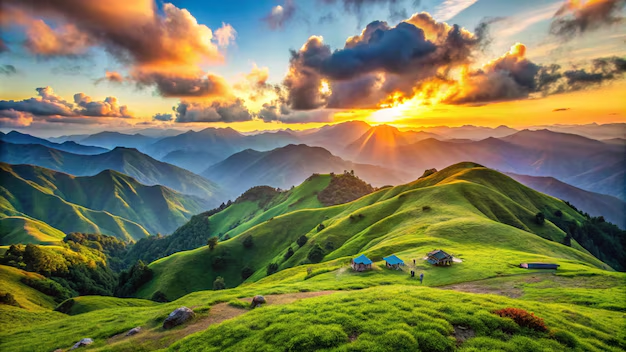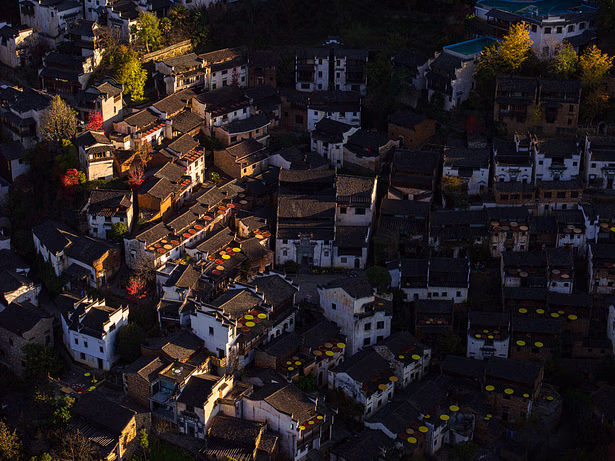A Travel Guide to Jiangxi
Nestled in southeastern China, Jiangxi Province is an underrated gem that blends stunning natural landscapes, rich cultural heritage, and a profound historical legacy. Known as “Gan” after the Gan River, Jiangxi is home to the world-renowned porcelain capital of Jingdezhen, UNESCO World Heritage Sites like Mount Lu and Sanqing Mountain, and the picturesque countryside of Wuyuan. With its lush mountains, serene lakes, and revolutionary history, Jiangxi offers a perfect escape for nature lovers, culture enthusiasts, and history buffs alike. This guide will help you plan a memorable trip to this captivating province.
Why Visit Jiangxi?
Jiangxi is a treasure trove of diverse attractions. It boasts five UNESCO World Heritage Sites, including the majestic Mount Lu and the Taoist haven of Sanqing Mountain. The province is also famous for Jingdezhen, the “Porcelain Capital,” where you can dive into over 2,000 years of ceramic craftsmanship. Wuyuan, often called “China’s most beautiful countryside,” enchants with its ancient villages and vibrant rapeseed flower fields. Add to that Poyang Lake, China’s largest freshwater lake, and revolutionary sites like Jinggangshan, and Jiangxi delivers a unique blend of natural beauty, cultural depth, and historical significance. Its relatively off-the-beaten-path status means fewer crowds compared to destinations like Beijing or Shanghai, offering a more authentic and tranquil experience.
How to Get There
Jiangxi is well-connected to major Chinese cities, with Nanchang, the capital, serving as the primary gateway.
By Air: Nanchang Changbei International Airport (KHN) offers domestic flights from Beijing (2.5 hours), Shanghai (1.5 hours), Guangzhou (1.5 hours), and other hubs. International flights are limited, so connecting through Shanghai or Beijing is recommended. Jingdezhen Luojia Airport and Jinggangshan Airport (Ji’an) serve regional flights, ideal for specific destinations. Fares from Shanghai to Nanchang start at ~¥300–500 one-way.
By High-Speed Train: Jiangxi’s major cities (Nanchang, Jingdezhen, Jiujiang, Shangrao, Ganzhou) are accessible via bullet trains. For example: Shanghai to Nanchang: ~3.5 hours, ¥300–400. Beijing to Nanchang: ~6 hours, ¥500–700. Huangshan to Jingdezhen: ~1 hour, ¥80–120. Book tickets via Trip.com or at train stations.
By Bus: Long-distance buses connect Jiangxi to neighboring provinces like Zhejiang, Fujian, and Hunan. They’re cheaper (e.g., ¥100–200 from Hangzhou to Nanchang) but slower and less comfortable than trains.
Within Jiangxi: Nanchang has four metro lines for easy city travel (¥2–6). Buses and taxis are widely available in other cities. High-speed trains link key destinations like Jingdezhen, Jiujiang, and Shangrao.
Tip: Use ride-hailing apps like Didi for convenience, especially in rural areas where public transport is less frequent.
Best Time to Visit
Jiangxi’s subtropical monsoon climate brings warm, humid summers and mild winters, with distinct seasonal highlights:
Spring (March–May): Ideal for flower viewing, especially Wuyuan’s rapeseed blossoms (March–April). Temperatures range from 15–25°C, but expect rain. Summer (June–August): Hot (25–35°C) and rainy, but lush greenery makes it great for mountain hikes. Early mornings avoid the heat.
Autumn (September–November): Crisp weather (15–25°C) and vibrant foliage, perfect for Mount Lu and Sanqing Mountain. The Jingdezhen International Ceramic Expo in October is a cultural highlight. Winter (December–February): Cooler (5–15°C) and drier, ideal for Poyang Lake’s migratory birdwatching (e.g., white cranes).
Tip: Avoid major holidays like National Day (early October) to escape crowds. Check the lunar calendar for new moon nights to enjoy stargazing at places like Gexian Village’s Zhaixing Tower.
Top Attractions
Mount Lu (庐山)
Lushan Mountain, located in Jiujiang City, Jiangxi Province, is one of China’s most celebrated natural and cultural landmarks. Renowned for its misty peaks, cascading waterfalls, and historical significance, Lushan has been a UNESCO World Heritage Site since 1996. Often called the “Cool Summer Retreat,” it has inspired poets, scholars, and leaders for centuries, including its role as a key political meeting site in modern Chinese history.





Sanqing Mountain (三清山)
Sanqing Mountain, or Sanqingshan, located in the northeast of Jiangxi Province, is a UNESCO World Heritage Site and Global Geopark renowned for its breathtaking granite peaks, lush forests, and deep Taoist heritage. Often called “Little Huangshan” for its resemblance to the famous Yellow Mountain, Sanqing Mountain offers a less crowded yet equally stunning alternative with unique rock formations, ancient temples, and vibrant biodiversity.





Wugong Mountain (武功山)
Wugong Mountain is a paradise for outdoor enthusiasts, famous for its vast meadows that ripple across high-altitude ridges, resembling a green carpet under the sky. Its sea of clouds, especially at sunrise, creates a dreamlike spectacle, while waterfalls, ancient temples, and Taoist relics add cultural depth. The mountain’s diverse geological features, including Jurassic granite “stone forests” and karst formations, make it a haven for geologists and photographers.





Wangxian Valley Town (望仙谷)
Nestled in the scenic Guangxin District of Shangrao City, Jiangxi Province, Wangxian Valley Town is a captivating destination that feels like stepping into a fairytale. Known for its cliffside hanging houses, cascading waterfalls, ancient villages, and lush forests, this National 4A-level scenic spot has transformed from an abandoned quarry into a viral tourism hotspot, often dubbed a “real-life xianxia (fantasy) world.”





Tengwang Pavilion (滕王阁)
Perched majestically on the east bank of the Gan River in Nanchang, the capital of Jiangxi Province, Tengwang Pavilion (also known as the Pavilion of Prince Teng) is a cultural and architectural gem with a history spanning over 1,300 years. Renowned as one of the “Three Great Pavilions of Jiangnan” alongside Yueyang Tower (Hunan) and Yellow Crane Tower (Hubei), it is celebrated for its Song Dynasty-style architecture, literary significance, and stunning riverside views.





Huangling Scenic Area (婺源篁岭) ★★
Nestled in the picturesque Wuyuan County of Jiangxi Province, the Huangling Scenic Area is a hidden gem that offers a perfect blend of natural beauty, cultural heritage, and traditional rural life. Known for its stunning terraced fields, ancient villages, and unique “sun-drying” customs, Huangling is a must-visit destination for travelers seeking an authentic Chinese experience.





Wuyuan Jiangling (婺源江岭) ★★
The highlight of Wuyuan Jiangling is undoubtedly the Jiangling Scenic Area. The terraced fields of rapeseed flowers create a breathtaking panorama that is a photographer’s dream. The best viewpoint is from the observation deck, which offers a panoramic view of the entire area.






















Leave a Reply